#GIS-based urban development
Explore tagged Tumblr posts
Text
The Power of GIS in Urban Planning: A Comprehensive Overview
Urban planning is a dynamic and complex process that involves designing, organizing, and managing the physical, social, and economic aspects of cities. In the modern age, Geographic Information Systems (GIS) have emerged as a critical tool for urban planners, helping visualize, analyze, and manage city data efficiently. GIS allows city administrators to make data-driven decisions that shape sustainable, resilient, and smart urban environments.
This blog explores how GIS technology is transforming urban planning by providing better data integration, infrastructure management, environmental analysis, and more.
Read at https://www.cyberswift.com/blog/the-power-of-gis-in-urban-planning-a-comprehensive-overview/

#GIS in urban planning#Urban planning GIS software#GIS for city planning#Smart cities and GIS#GIS-based urban development#GIS in land use planning#Urban mapping using GIS#GIS spatial analysis in urban planning#GIS applications in urban planning#Urban planning solutions using GIS#Geospatial technology in urban planning#GIS for urban management#Land use analysis with GIS#GIS for sustainable cities#Urban planning mapping tools#GIS for infrastructure planning#GIS for transportation planning#GIS for zoning and land use#GIS and urban sprawl analysis#GIS for population density mapping#How GIS supports urban planning and development#Role of GIS in sustainable urban planning#Best GIS tools for urban planners#Applications of GIS in smart city projects#Using GIS to analyze urban growth
0 notes
Text
Udaan by InAmigos Foundation: Elevating Women, Empowering Futures

In the rapidly evolving socio-economic landscape of India, millions of women remain underserved by mainstream development efforts—not due to a lack of talent, but a lack of access. In response, Project Udaan, a flagship initiative by the InAmigos Foundation, emerges not merely as a program, but as a model of scalable women's empowerment.
Udaan—meaning “flight” in Hindi—represents the aspirations of rural and semi-urban women striving to break free from intergenerational limitations. By engineering opportunity and integrating sustainable socio-technical models, Udaan transforms potential into productivity and promise into progress.
Mission: Creating the Blueprint for Women’s Self-Reliance
At its core, Project Udaan seeks to:
Empower women with industry-aligned, income-generating skills
Foster micro-entrepreneurship rooted in local demand and resources
Facilitate financial and digital inclusion
Strengthen leadership, health, and rights-based awareness
Embed resilience through holistic community engagement
Each intervention is data-informed, impact-monitored, and custom-built for long-term sustainability—a hallmark of InAmigos Foundation’s field-tested grassroots methodology.
A Multi-Layered Model for Empowerment

Project Udaan is built upon a structured architecture that integrates training, enterprise, and technology to ensure sustainable outcomes. This model moves beyond skill development into livelihood generation and measurable socio-economic change.
1. Skill Development Infrastructure
The first layer of Udaan is a robust skill development framework that delivers localized, employment-focused education. Training modules are modular, scalable, and aligned with the socio-economic profiles of the target communities.
Core domains include:
Digital Literacy: Basic computing, mobile internet use, app navigation, and digital payment systems
Tailoring and Textile Production: Pattern making, machine stitching, finishing techniques, and indigenous craft techniques
Food Processing and Packaging: Pickle-making, spice grinding, home-based snack units, sustainable packaging
Salon and Beauty Skills: Basic grooming, hygiene standards, customer interaction, and hygiene protocols
Financial Literacy and Budgeting: Saving schemes, credit access, banking interfaces, micro-investments
Communication and Self-Presentation: Workplace confidence, customer handling, local language fluency
2. Microenterprise Enablement and Livelihood Incubation
To ensure that learning transitions into economic self-reliance, Udaan incorporates a post-training enterprise enablement process. It identifies local market demand and builds backward linkages to equip women to launch sustainable businesses.
The support ecosystem includes:
Access to seed capital via self-help group (SHG) networks, microfinance partners, and NGO grants
Distribution of startup kits such as sewing machines, kitchen equipment, or salon tools
Digital onboarding support for online marketplaces such as Amazon Saheli, Flipkart Samarth, and Meesho
Offline retail support through tie-ups with local haats, trade exhibitions, and cooperative stores
Licensing and certification where applicable for food safety or textile quality standards
3. Tech-Driven Monitoring and Impact Tracking
Transparency and precision are fundamental to Udaan’s growth. InAmigos Foundation employs its in-house Tech4Change platform to manage operations, monitor performance, and scale the intervention scientifically.
The platform allows:
Real-time monitoring of attendance, skill mastery, and certification via QR codes and mobile tracking
Impact evaluation using household income change, asset ownership, and healthcare uptake metrics
GIS-based mapping of intervention zones and visualization of under-reached areas
Predictive modeling through AI to identify at-risk participants and suggest personalized intervention strategies
Human-Centered, Community-Rooted
Empowerment is not merely a process of economic inclusion—it is a cultural and psychological shift. Project Udaan incorporates gender-sensitive design and community-first outreach to create lasting change.
Key interventions include:
Strengthening of SHG structures and women-led federations to serve as peer mentors
Family sensitization programs targeting male allies—fathers, husbands, brothers—to reduce resistance and build trust
Legal and rights-based awareness campaigns focused on menstrual hygiene, reproductive health, domestic violence laws, and maternal care
Measured Impact and Proven Scalability
Project Udaan has consistently delivered quantifiable outcomes at the grassroots level. As of the latest cycle:
Over 900 women have completed intensive training programs across 60 villages and 4 districts
Nearly 70 percent of participating women reported an average income increase of 30 to 60 percent within 9 months of program completion
420+ micro-enterprises have been launched, 180 of which are now self-sustaining and generating employment for others
More than 5,000 indirect beneficiaries—including children, elderly dependents, and second-generation SHG members—have experienced improved access to nutrition, education, and mobility
Over 20 institutional partnerships and corporate CSR collaborations have supported infrastructure, curriculum design, and digital enablement.
Partnership Opportunities: Driving Collective Impact
The InAmigos Foundation invites corporations, philanthropic institutions, and ecosystem enablers to co-create impact through structured partnerships.
Opportunities include:
Funding the establishment of skill hubs in high-need regions
Supporting enterprise starter kits and training batches through CSR allocations
Mentoring women entrepreneurs via employee volunteering and capacity-building workshops
Co-hosting exhibitions, market linkages, and rural entrepreneurship fairs
Enabling long-term research and impact analytics for policy influence
These partnerships offer direct ESG alignment, brand elevation, and access to inclusive value chains while contributing to a model that demonstrably works.
What Makes Project Udaan Unique?

Unlike one-size-fits-all skilling programs, Project Udaan is rooted in real-world constraints and community aspirations. It succeeds because it combines:
Skill training aligned with current and emerging market demand
Income-first design that integrates microenterprise creation and financial access
Localized community ownership that ensures sustainability and adoption
Tech-enabled operations that ensure transparency and iterative learning
Holistic empowerment encompassing economic, social, and psychological dimensions
By balancing professional training with emotional transformation and economic opportunity, Udaan represents a new blueprint for inclusive growth.
From Promise to Power
Project Udaan, driven by the InAmigos Foundation, proves that when equipped with tools, trust, and training, rural and semi-urban women are capable of becoming not just contributors, but catalysts for socio-economic renewal.
They don’t merely escape poverty—they design their own systems of progress. They don’t just participate—they lead.
Each sewing machine, digital training module, or microloan is not a transaction—it is a declaration of possibility.
This is not charity. This is infrastructure. This is equity, by design.
Udaan is not just a program. It is a platform for a new India.
For partnership inquiries, CSR collaborations, and donation pathways, contact: www.inamigosfoundation.org/Udaan Email: [email protected]
3 notes
·
View notes
Text
GIS In Our Daily Lives
The involvement of Geographic Information Systems (GIS) in our daily lives is pervasive, influencing and enhancing various aspects across different sectors. The integration of GIS into everyday activities has become integral for decision-making, planning, and optimizing resources. GIS helps city planners and transportation experts to provide them with information like maps, satellite pictures, population statistics, and infrastructure data. GIS helps them make better decisions when designing cities and transportation systems that are sustainable and good for the environment.
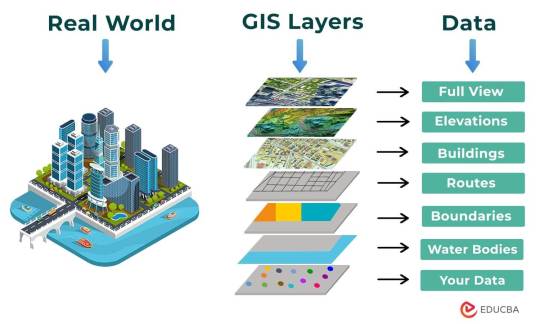
The following points elucidate the notable involvement of GIS in our daily lives:
Navigation and Location Services: GIS provides monitoring functions through the visual display of spatial data and precise geographical positioning of monitored vehicles, whereas GPS provides accurate, clear, and precise information on the position and navigation of a monitored or tracked vehicle in real-time and at the exact location.GIS is at the core of navigation applications and location-based services on smartphones. It enables accurate mapping, real-time navigation, and geolocation services, assisting individuals in finding locations, planning routes, and navigating unfamiliar areas.
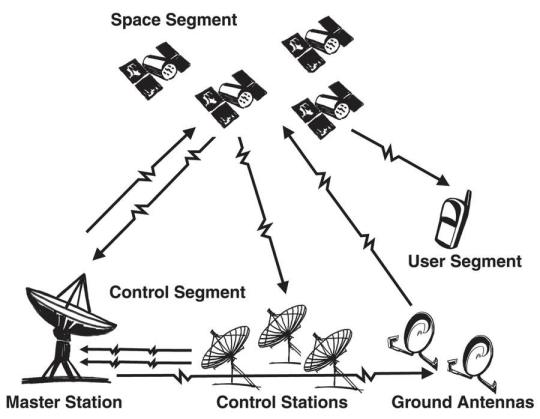
E-Commerce and Delivery Services: GIS software is a powerful tool for supply chain network planning. It helps determine the optimal location for distribution centers, warehouses, or other supply facilities. GIS is utilized in logistics and delivery services for optimizing routes, tracking shipments, and ensuring timely deliveries. E-commerce platforms leverage GIS to enhance the efficiency of their supply chain and last-mile delivery processes.
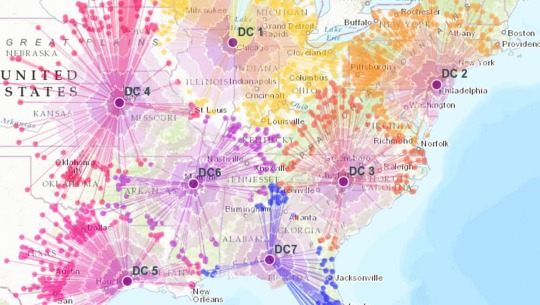
Weather Forecasting and Disaster Management: Many states are using GIS dashboard to monitor the rainfall across the state, on a real-time basis, from the data shared by rain sensors installed at various locationsGIS plays a crucial role in weather forecasting and disaster management. It assists meteorologists in analyzing spatial data, predicting weather patterns, and facilitating timely responses to natural disasters by mapping affected areas and coordinating emergency services.
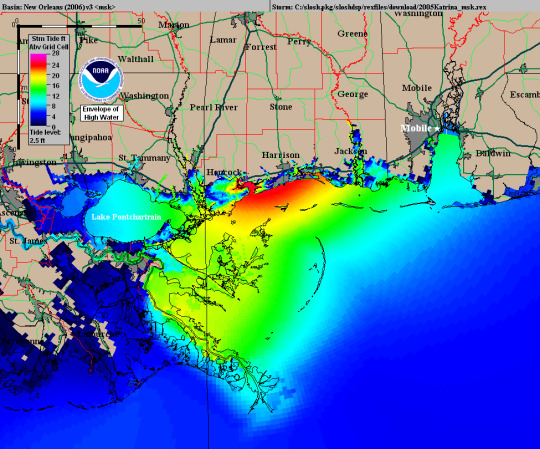
Healthcare Planning and Disease Monitoring: Geographic Information Systems enable the visualization and monitoring of infectious diseases. Additionally GIS records and displays the necessary information that health care needs of the community as well as the available resources and materials. GIS supports public health initiatives by mapping the spread of diseases, analyzing healthcare resource distribution, and assisting in the planning of vaccination campaigns. It aids in identifying high-risk areas and optimizing healthcare service delivery.
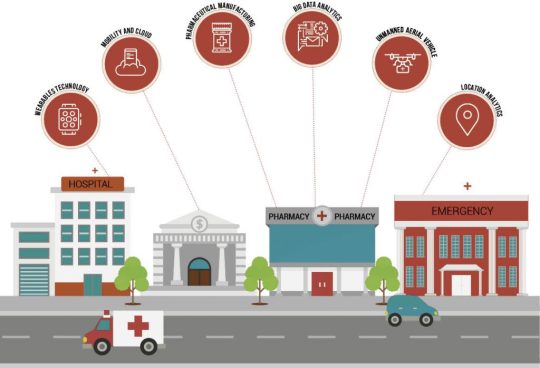
Social Media and Geo-tagging: GIS also helps in geotagging and other location related information in posts, it’s tools can map and visualize the spatial distribution of social media activity. This analysis can reveal trends, hotspots, and patterns in user engagement across different geographic areas. Many social media platforms incorporate GIS for geo-tagging, allowing users to share their location and experiences. This feature enhances social connectivity and facilitates the sharing of location-specific information.
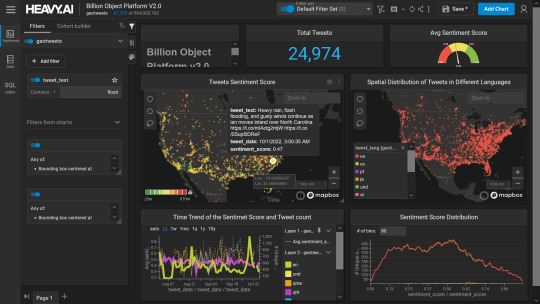
Smart City Initiatives: The Geographic Information System (GIS) offers advanced and user-friendly capabilities for Smart City projects and allows to capture, store and manipulate, analyze and visualize spatially referenced data. It is used for spatial analysis and modeling. It is the cornerstone of smart city planning, enabling the integration of data for efficient urban management. It supports initiatives related to traffic management, waste disposal, energy consumption, and overall infrastructure development.
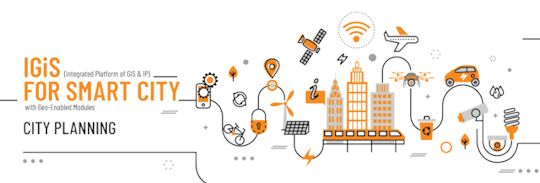
Education and Research: GIS is increasingly utilized in education and research for visualizing and analyzing spatial data. It enables students and researchers to explore geographic relationships, conduct field studies, and enhance their understanding of various subjects.

Agricultural Management and Precision Farming: Farmers leverage GIS to optimize agricultural practices by analyzing soil conditions, crop health, and weather patterns. Precision farming techniques, facilitated by GIS, contribute to increased crop yields and sustainable farming practices.
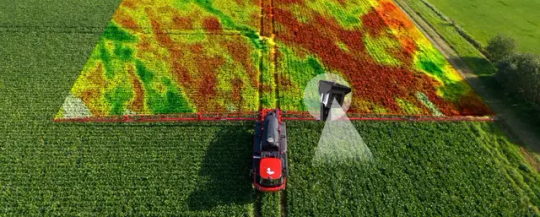
Real Estate and Property Management: In the real estate sector, GIS aids in property mapping, land valuation, and site selection. It provides real estate professionals with valuable insights into spatial relationships, market trends, and optimal development opportunities.
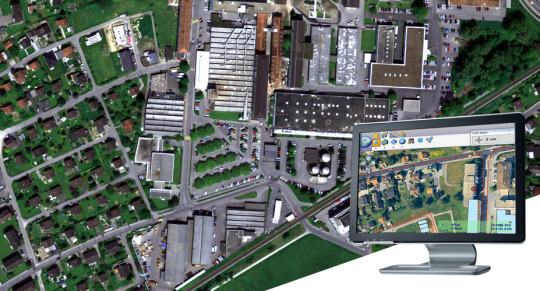
Tourism and Recreation: GIS enhances the tourism industry by providing interactive maps, route planning, and location-based information. It assists tourists in exploring destinations, finding attractions, and navigating efficiently.
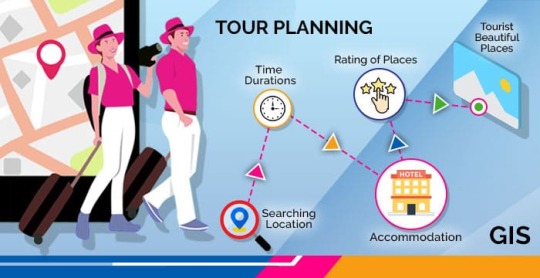
The broad and varied involvement of GIS in our daily lives underscores its significance as a technology that not only facilitates geographic data analysis but also contributes to the efficiency, safety, and interconnectedness of modern society. As GIS applications continue to evolve, their impact on daily activities is expected to further expand and refine.
#gis#architectdesign#architecture#city#education#geographic information system(gis)#geographical indication
14 notes
·
View notes
Text

Udon Thani
Udon Thani


Udon Thani (Thai: อุดรธานี, pronounced [ʔù.dɔ̄ːn tʰāː.nīː]) is a city in Isan (Northeast Thailand), the capital of Udon Thani Province and the sixth largest city in Thailand. The city municipality (thesaban nakhon / city proper) had a population of 130,531 people as of 2019, while Udon Thani's urban area, Mueang Udon Thani, has a population of approximately 400,000. Udon Thani is one of four major cities in Isan, the others being Nakhon Ratchasima, Ubon Ratchathani, and Khon Kaen. Together they are known as the "big four of Isan".

Location
Udon is approximately 560 km from Bangkok. It is a major official and commercial center in northern Isan, Thailand, and the gateway to Laos, northern Vietnam, and southern China.



History
The city's economy was boosted by the proximity to Udorn Royal Thai Air Force Base during the Vietnam War and retains reminders of that time in the form of bars, coffee shops, and hotels. "Udon sort of became like Pattaya when the GIs arrived," said a local architect. "Restaurants serving Western cuisine, hotels and nightclubs sprouted up everywhere to meet their needs. It was an extremely busy city back then."
The BBC has reported that Udon Thani's Royal Air Force Base was the site of a CIA black site, known to insiders as "Detention Site Green", used to interrogate Abu Zubaydah, Saudi-born Palestinian, believed to be one of Osama bin Laden's top lieutenants. In December 2014 the United States Senate Select Committee on Intelligence (SSCI) published an executive summary of a secret 6,000-page report on CIA techniques. The report alleges that at least eight Thai senior officials knew of the secret site. The site was closed in December 2002.
Earlier reports alleged that a Voice of America relay station in a rural area of Udon Thani Province, Ban Dung District, was the CIA black site.



Administration
Udon Thani town municipality (thesaban mueang) with an area of 5.6 km2 (2.2 sq mi) was established on 15 March 1936. On 27 May 1953, the area covered by the municipality was increased to 8.3 km2 (3.2 sq mi). As a result of the town's continuing growth, the total area of the municipality was enlarged for the second time to 47.7 km2 (18.4 sq mi). on 31 December 1993. On 25 September 1995 Udon Thani was upgraded to city municipality (thesaban nakhon), and is divided into 21 sub-districts (tambons), which are further subdivided into 248 villages (mubans). (chumchon), 130,531 people in 60,659 households.
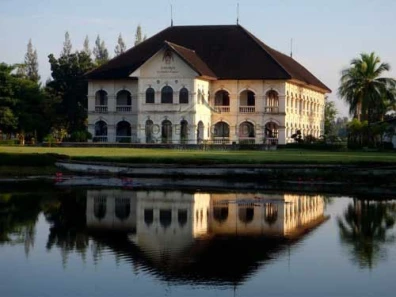

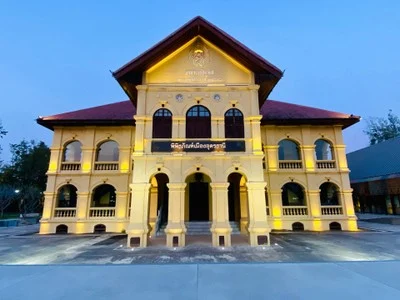
Transport
Udon Thani International Airport, close to the city centre (within the ring road), serves a number of domestic airports: Chiang Mai International Airport, U-Tapao International Airport (Pattaya), and Phuket, with approximately 24 daily flights to Bangkok (Don Mueang International and Suvarnabhumi Airport). During the 2020-2021 COVID-19 pandemic flights were reduced to 10-14 daily to Bangkok airports only.
Udon Thani railway station in the city centre receives four trains daily from Bangkok railway station (Hua Lamphong) including overnight sleepers.




Economy
Mining
Asia Pacific Potash Corporation (APPC), a wholly owned subsidiary of Italian-Thai Development PLC, owns the concession to the Udon North and Udon South potash mines and plans to develop them. Potash deposits in northeast Thailand are believed to contain the world's third-largest—after Canada and Russia—unexploited potash reserves. Potash is one of the main components of agricultural fertilizer.
Climate
Udon Thani has a tropical savanna climate (Köppen climate classification Aw). Winters are fairly dry and very warm. Temperatures rise until April, which is hot with the average daily maximum at 36.2 °C (97.2 °F). The monsoon season runs from late-April through early-October, with heavy rain and somewhat cooler temperatures during the day, although nights remain warm. The range of reliably recorded temperatures in the city is from 2.5 °C (36.5 °F) to 44.1 °C (111.4 °F).
Udon Thani , Thailand , Udon Thani Province , อุดรธานี
CR :: https://en.wikipedia.org/wiki/Udon_Thani , https://prinkotakoon.blogspot.com/2024/09/udon-thani.html
2 notes
·
View notes
Text
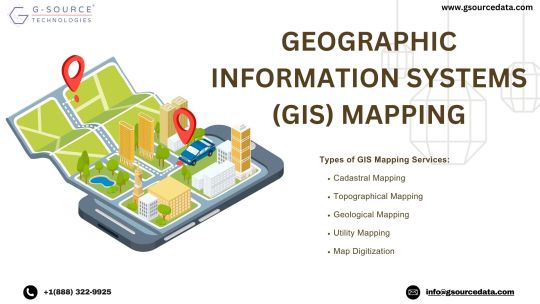
Geographic Information Systems (GIS) mapping services stand as the cornerstone of modern spatial analysis, bridging the gap between geographical data and informed decision-making. This dynamic technology seamlessly integrates diverse datasets onto a unified platform, yielding a comprehensive view of our surroundings. Within this realm, Gsource Technologies emerges as a leading force, offering a suite of GIS services that encompass a wide spectrum of applications.
From cadastral mapping, which aids in land administration and property management, to topographical mapping that captures the intricacies of terrain, Gsource Technologies' GIS expertise is all-encompassing. Their proficiency extends to parcel mapping, facilitating accurate delineation of property boundaries for effective land use planning.
With an eye on technological advancement, Gsource Technologies excels in map digitization, transforming paper-based maps into dynamic, interactive digital formats. Geological mapping, another specialized service, enables the identification and visualization of geological features, crucial for resource exploration and environmental studies.
Gsource Technologies' commitment to GIS services empowers urban planners to craft sustainable cities through spatial analysis, conservationists to safeguard ecosystems, and businesses to make data-driven decisions for growth. Moreover, their involvement in cadastral, topographical, parcel, map digitization, and geological mapping underscores their comprehensive approach to spatial data analysis.
In essence, GIS mapping services, coupled with Gsource Technologies' proficiency, reshape the way we perceive, analyse, and leverage geographical data. This synergy cultivates smarter urban development, environmental stewardship, and informed business strategies, ensuring a more sustainable and interconnected future.
#gsourcetechnolgies#engineeringservices#architecturedesignservices#GIS#geographic information system#cadastral#mapdigitization#architecturedesigns
3 notes
·
View notes
Text
Map Smart: Solve Real-World Challenges with Free GIS Tools for Students & Researchers

In today’s data-driven world, free GIS mapping tools empower students and researchers to visualize, analyze, and solve spatial problems with confidence. Using online platforms, geographic data becomes a dynamic resource for educational planning, strategic development, and community-based research.
Why Use GIS to Plan Real-World Infrastructure Like Hospitals? Understanding both spatial access and service gaps is essential in planning hospitals, especially in underserved or high-density regions. GIS tools simplify complex decisions and help users explore key questions like:
Which areas lack access to nearby healthcare facilities?
What’s the travel time for patients during emergencies?
Which zones meet criteria for safety, accessibility, and land use?
By layering data (roads, population, terrain, land use) and applying tools like buffers, isochrones, and clip operations, planners can make smart, data-backed site choices.
Key Benefits of GIS Mapping in Education and Research 🔍 Spatial Awareness – Understand how geography influences access to healthcare. 📊 Data Analysis Skills – Work with real datasets to uncover service gaps. 🌍 Cross-Disciplinary Learning – Apply GIS across public health, planning, and urban studies. 🛠️ Practical Tools – Use no-code features like buffer zones and travel-time maps. 📚 Applied Research – Simulate hospital planning scenarios to guide real decisions.
How to Create a Smart Mapping Project
Start a new story and load the GIS data layers: “Transportation: airport,” “Land Use: land,” and “Industrial: warehouse.” Choose your area of interest by navigating from country to state to district. Use the Buffer Tool under the process data menu to create 5 km zones around airports, labeling them as “Airport Proximity Zones.” Next, apply the Isochrone Tool under the process data to highlight regions accessible within 60 minutes via the road network and name them “Travel Zones.” Then, use the Clip Tool under the process data to identify areas where these two zones intersect and save the output as “Overlapped Zones.” Within these zones, select 5 warehouse locations using the Add Points feature, and include attributes like name, area (in sq. ft.), an image, and the measured distance to the nearest airport using the Measure Tool. Customize each point with appropriate icons and labels. Finally, publish and share your completed interactive map for use in education or research.

Open Tools, Real Applications Free GIS platforms like MAPOG bring professional-level tools to students, educators, and civic planners. With drag-and-drop layers and visual editing, they’re ideal for:
Public healthcare facility planning
Emergency service accessibility analysis
Civic tech and classroom use
Group-based student research
Educational Impact and Use Case This kind of mapping activity brings theory to life. Students build:
Real-world spatial thinking and planning skills
Familiarity with GIS tools used in healthcare services
Portfolio-worthy projects in applied research
GIS becomes a powerful connector across domains from public health and geography to urban planning and social impact.
Conclusion Free GIS tools transform complex public health planning problems like selecting new hospital sites into clear, data-informed strategies. By integrating layered data with spatial tools and practical workflows, students and researchers can tackle urgent, real-world questions with purpose.
🌐 Ready to plan smarter? Try a GIS platform for your research project and start building your hospital site selection project today.
#GISMapping#EducationTools#DataVisualization#FreeGIS#MAPOG#UrbanPlanning#StudentProjects#InteractiveMaps#GeospatialTech#EdTech
0 notes
Text
Semi-Integrated Lights in Raipur, Chhattisgarh: Smart Lighting for Sustainable Outdoor Solutions
As cities like Raipur move toward smarter and greener infrastructure, solar-powered lighting solutions have become increasingly popular. Among the various options available, semi-integrated solar street lights offer an excellent balance of performance, durability, and cost-effectiveness. These lights are ideal for illuminating streets, residential colonies, pathways, gardens, and remote areas where traditional grid-based lighting is challenging or expensive to maintain.
At Techno Sun Energy, we offer advanced and affordable semi-integrated lights in Raipur, Chhattisgarh, customized to meet urban and rural outdoor lighting needs.
What Are Semi-Integrated Solar Lights?
Semi-integrated lights are a type of solar street light where the solar panel is separate from the LED light unit but is connected via a cable. The LED light, battery, and controller are integrated into one compact housing, while the solar panel is mounted independently, often on the same pole.
This setup offers more flexibility in solar panel positioning and better heat management compared to fully integrated systems.
Key Components Include:
High-efficiency monocrystalline or polycrystalline solar panel
Lithium-ion or LiFePO4 battery
Smart charge controller with motion sensor (optional)
High-lumen LED lighting
MS/GI pole (as required)
Benefits of Semi-Integrated Solar Lights in Raipur
Raipur enjoys over 300 sunny days a year, making it an ideal location for solar lighting. Whether it's an urban street or a remote village, semi-integrated lights bring numerous advantages:
✅ Energy Efficient & Eco-Friendly
Uses solar energy, reducing reliance on grid power and lowering carbon emissions.
✅ Flexible Installation
Separate solar panel allows optimal positioning for maximum sun exposure, enhancing performance.
✅ Cost-Effective
Lower maintenance and no electricity bills. Perfect for government and private projects with tight budgets.
✅ Reliable Lighting
Automatically turns on at dusk and off at dawn. Ideal for areas with power cuts or no grid access.
✅ Smart Operation (Optional)
Available with motion sensors to increase brightness only when movement is detected—saving battery life and reducing light pollution.
✅ Durable Build
Weather-resistant and designed to handle harsh Indian climate conditions.
Applications of Semi-Integrated Lights in Raipur
At Techno Sun Energy, we provide semi-integrated solar lights for a wide range of applications:
Urban and rural street lighting
Housing societies, colonies, and parks
Campus pathways in schools, colleges, and universities
Temples, mosques, and community centers
Factories, warehouses, and industrial zones
Bus stops, parking areas, and farm roads
Remote villages and tribal regions under development schemes
Whether you need 9W, 12W, 18W, or 24W systems, we offer lighting solutions tailored to your needs and budget.
Techno Sun Energy – Leading Supplier in Raipur
With over 7 years of experience in solar energy solutions, Techno Sun Energy is a CREDA-registered and MNRE-compliant supplier of semi-integrated solar lights in Raipur and across Chhattisgarh.
What We Offer:
Site assessment and consultation
Customized lighting solutions for urban and rural settings
High-quality components from trusted brands
Installation services with skilled local technicians
Warranty and AMC options
Bulk supply for government tenders, NGOs, and CSR projects
We have successfully supplied and installed thousands of lights across villages, townships, and panchayats under state and central government schemes.
Success Story: Village Lighting Project in Tilda Block, Raipur
Under a rural development initiative, Techno Sun Energy installed over 150 semi-integrated solar lights in five villages near Tilda, Raipur. These lights now provide safe, reliable, and bright illumination at night, drastically improving road safety and community life. Maintenance costs have dropped, and the villagers are no longer dependent on unreliable electricity.
Government Support for Solar Lighting Projects
The Chhattisgarh Renewable Energy Development Agency (CREDA) supports solar street light installations under various schemes. Subsidies and financial assistance are available for:
Rural electrification
Smart village development
CSR initiatives
Government and panchayat projects
Techno Sun Energy assists with all documentation, approvals, and subsidy processes.
Conclusion
If you're looking for affordable, low-maintenance, and energy-efficient outdoor lighting, then semi-integrated lights in Raipur, Chhattisgarh are the ideal solution. With proven reliability and government support, these systems are lighting up streets, pathways, and public spaces across the region.
Ready to illuminate your area the smart way? Contact Techno Sun Energy today to get expert consultation, competitive pricing, and professional installation of semi-integrated solar lights in Raipur.
0 notes
Text
Bringing Infrastructure to Life: 3D Map Illustration in Large-Scale Public Architecture

Bringing Infrastructure to Life: 3D Map Illustration in Large-Scale Public Architecture
Large-scale public architecture and urban infrastructure projects are the backbone of thriving cities. From expansive transportation networks and gleaming civic centers to revitalized waterfronts and sprawling public parks, these projects shape our daily lives, influence economic growth, and define the character of our urban environments. However, conveying the immense scale, intricate interconnections, and profound societal impact of these undertakings to a diverse audience—from government officials and engineering teams to community stakeholders and the general public—is a monumental communication challenge.
3D Map Illustration transforms large-scale public architecture, because it’s not just about showcasing a building; it's about illustrating an entire ecosystem of infrastructure, public spaces, and community integration, making the invisible visible and the conceptual tangible.
The Strategic Value of 3D Map Illustration
A well-executed 3D Map Illustration acts as the central visual narrative for large-scale public architecture projects. It's the go-to resource for briefings, public consultations, funding proposals, and marketing campaigns.
Provide a Holistic Overview:
Show the entire project within its real-world context – existing buildings, topography, natural features, and proposed developments – at a glance.
Simplify Complexity:
Break down intricate engineering and planning into an easily digestible visual format.
Foster Public Engagement and Buy-in:
When communities can clearly see how a project will impact their daily lives and enhance their environment, they are more likely to support it.
Attract Investment and Funding:
Funders need to visualize the scope, impact, and potential returns of large investments.
Aid Internal Coordination:
Different project teams (architects, civil engineers, landscape architects, urban planners) can use the map as a shared visual language, ensuring everyone is working towards a unified vision.
The Precision Behind the Art: 3D Vector Maps
The foundation of a highly effective 3D Map Illustration for large-scale public architecture is built upon the robust framework of 3D Vector Maps. These are not simply images; they are intelligent, geometrically precise digital models of geographic space.
Here's why 3D Vector Maps are indispensable:
Unparalleled Accuracy:
Built from GIS data, LiDAR scans, drone photogrammetry, and CAD drawings, 3D Vector Maps capture highly accurate topographical features, existing infrastructure, and proposed designs down to minute details. This precision is vital for engineering validation and regulatory compliance.
Scalability without Degradation:
As vector graphics, these maps can be zoomed in or out infinitely without pixelation or loss of detail. This means a single map can serve multiple purposes, from a broad regional overview to a detailed close-up of a specific interchange or public plaza.
Data Richness and Layering:
3D Vector Maps can incorporate vast amounts of data in distinct layers – existing buildings, new construction, roads, railways, pedestrian paths, green spaces, waterways, utility lines, and even environmental data. These layers can be toggled on and off, allowing for focused analysis or comprehensive views.
Flexibility and Adaptability:
Because the map is composed of individual vector objects, specific elements can be easily updated, moved, or redesigned without requiring a complete re-render. This is crucial during the iterative planning phases of large public projects, ensuring the 3D Map Illustration always reflects the latest design.
Interactivity Potential:
Beyond static images, 3D Vector Maps serve as the perfect foundation for interactive web-based applications. Stakeholders can explore the project virtually, click on specific elements for more information, or toggle different planning scenarios. This dynamic capability truly brings the project to life for all users.
The Artistic Narrative: Architecture Illustration in Context
While 3D Vector Maps provide the technical backbone, it's the artistry of Architecture Illustration that transforms the data into a compelling visual narrative, captivating audiences and conveying the human experience of the proposed infrastructure.
Key elements of Architecture Illustration in large-scale public architecture maps include:
Realistic Depiction of Structures:
Every bridge, tunnel, building, and transit station is rendered with accurate materials, lighting, and architectural details. The illustration conveys the intended aesthetic and how these structures will appear in their real-world environment.
Integrated Landscape Design:
Public architecture is often deeply intertwined with public spaces. Architecture Illustration showcases meticulously designed parks, plazas, pedestrian zones, and green infrastructure (like bioswales or green roofs), demonstrating how the project enhances urban livability and environmental sustainability.
Atmospheric Lighting and Mood:
The illustration captures specific lighting conditions – a bustling daytime scene, a serene twilight view with illuminated structures, or perhaps a misty morning. This sets the mood and highlights how the project will look and feel at different times.
Dynamic Elements and Activity:
Adding subtle human figures, vehicles, public transport, and other elements of urban life injects energy and scale into the scene. This helps viewers envision themselves within the revitalized spaces and understand the project's impact on daily activity.
Clear Visual Hierarchy:
The Architecture Illustration subtly guides the viewer's eye, emphasizing the key elements of the proposed design while maintaining the context of existing surroundings. This ensures the main message of the 3D Map Illustration is clear.
Storytelling Through Composition:
Strategic camera angles and compositions are chosen to highlight the most impactful aspects of the project – perhaps a bird's-eye view demonstrating connectivity, or a street-level perspective showcasing a new public square. Each illustration tells a part of the project's story.
Real-World Applications
The impact of 3D Map Illustration in large-scale public architecture is evident across numerous applications:
Urban Redevelopment Master Plans:
Clearly outlining proposed changes to entire city blocks or districts, including new residential, commercial, and public spaces.
Transportation Infrastructure Projects:
Visualizing new highways, railway lines, subway extensions, and integrated multimodal hubs, helping citizens understand improved connectivity.
Environmental Restoration and Waterfront Projects:
Showcasing how industrial areas can be transformed into vibrant public parks, wetlands, or recreational zones.
Civic and Cultural Districts:
Illustrating the synergy between new museums, government buildings, and surrounding public amenities.
Disaster Preparedness and Resiliency Planning:
Visualizing proposed flood defenses, green infrastructure, or evacuation routes in a comprehensive geographic context.
In each scenario, the 3D Map Illustration serves as the unifying visual, making complex plans accessible and inspiring.
Conclusion
Large-scale public architecture projects are monumental undertakings, and their successful realization hinges on effective communication. By leveraging the precise data of 3D Vector Maps and the compelling artistry of Architecture Illustration, these powerful visuals enable stakeholders to grasp the immense scale, intricate details, and profound societal benefits of proposed infrastructure. They foster transparency, build consensus, and ultimately, pave the way for the development of resilient, sustainable, and truly livable urban environments. In the realm of public architecture, seeing truly is believing, and a well-crafted 3D Map Illustration makes that belief a tangible reality.
0 notes
Text
Role of BIM in Disaster Management

The construction industry is being transformed by Building Information Modeling (BIM), which makes it possible to make better decisions based on data. One of its most critical applications is in disaster management and resilient infrastructure development. Governments and construction professionals can design structures that can withstand natural disasters like earthquakes, floods, and hurricanes by integrating BIM with risk assessment, emergency planning, and post-disaster recovery.
1. Risk Assessment & Hazard Simulation
Using real-time data, BIM lets architects and engineers simulate various disaster scenarios. Before beginning construction, professionals can evaluate flood-prone regions, seismic activity zones, and wind impact models by integrating Geographic Information Systems (GIS). Structures that are able to withstand natural disasters can be designed with the assistance of predictive modeling.
2. Resilient Infrastructure Design
BIM facilitates performance-based design, ensuring that buildings, bridges, and other infrastructure can endure extreme conditions. Features like material strength analysis, load distribution simulations, and energy efficiency modeling help in constructing disaster-resistant structures.
3. Emergency Response Planning
BIM provides 3D visualizations and digital twins that emergency responders and urban planners can use for rescue operations. BIM models assist in determining escape routes, emergency exits, and structural damage prior to human intervention in the event of a disaster, ensuring faster and safer response measures.
4. Post-Disaster Recovery and Reconstruction
After a disaster, BIM plays a crucial role in damage assessment and reconstruction planning. Engineers can quickly estimate the extent of damage, estimate the cost of repairs, and develop effective rebuilding strategies by comparing models before and after the disaster.
Conclusion
BIM is a game-changer in disaster management and resilient infrastructure. By adopting BIM-based risk assessment, simulation, and reconstruction planning, engineers and architects can create structures that minimize disaster impact and ensure public safety.
0 notes
Text
Small Satellite Market Drivers Include Demand for Earth Observation and Low-Cost Launch Solutions
The Small Satellite Market is experiencing a paradigm shift, primarily driven by the soaring need for Earth observation capabilities and the emergence of low-cost launch options. This combination is making space more accessible, allowing government agencies, private firms, and research institutions to capitalize on the advantages of compact satellite technologies. With the increasing affordability and technical feasibility, small satellites are disrupting traditional satellite development cycles and reshaping the future of global satellite services.

Surge in Earth Observation Applications
Earth observation has emerged as one of the most critical uses of small satellites. Whether monitoring climate change, analyzing agricultural productivity, or managing natural disasters, small satellites provide high-resolution imagery and data in near real-time. This capability allows for data-driven decision-making across sectors such as:
Agriculture: Monitoring crop health and predicting yields
Urban Planning: Tracking infrastructure development
Environmental Monitoring: Assessing deforestation, pollution, and water cycles
Disaster Management: Supporting emergency response during floods, wildfires, and hurricanes
Governments and commercial enterprises alike are leveraging small satellites to achieve these outcomes with unprecedented frequency and geographic coverage.
Cost Reduction and Miniaturization
Historically, space missions were prohibitively expensive and monopolized by national space agencies. Today, miniaturization and advances in electronics have reduced payload sizes without compromising performance. These compact payloads drastically lower the cost per mission and allow for more frequent launches.
Several contributing cost drivers include:
Standardized CubeSat architectures
Commercial off-the-shelf (COTS) components
Shared launch services (ride-sharing missions)
Reusable launch vehicles (e.g., by SpaceX and Rocket Lab)
By lowering the financial barrier to entry, small satellites are attracting a wide array of stakeholders, from startups to universities.
Enabling Commercial and Defense Capabilities
Commercial organizations are deploying satellite constellations for services ranging from broadband internet to global asset tracking. Notable developments include:
Communications: Providing global internet connectivity to underserved regions
Logistics: Tracking containers, cargo, and vehicles in real-time
Insurance: Monitoring assets for risk evaluation and loss mitigation
On the defense front, countries are investing in small satellites to bolster surveillance, intelligence, and navigation capabilities. These satellites are often easier to launch and replace, enhancing operational agility during geopolitical conflicts or emergencies.
Integration With Ground Infrastructure
The usability of small satellite data depends heavily on ground-based processing and communications infrastructure. Market drivers are amplified by developments in:
Ground stations: More numerous and interconnected stations allow for faster data downlink.
Data analytics platforms: AI and machine learning help in processing the deluge of incoming satellite data.
Cloud-based storage and delivery: Seamlessly integrating satellite imagery with end-user platforms like GIS systems.
These developments ensure that the advantages gained in orbit are fully realized on Earth, enhancing the overall efficiency of satellite applications.
Growing Support From Governments and Agencies
Global governments are stepping in to support small satellite missions through:
Funding: Subsidies, grants, and public-private partnerships
Regulations: Streamlining licensing and orbital assignment procedures
Infrastructure: Investing in spaceports and testbeds
Agencies like NASA, ESA, ISRO, and JAXA are integrating small satellite missions into their strategic goals, further validating their critical role in space innovation.
The Domino Effect of Launch Service Providers
Low-cost launch providers are the backbone of the small satellite boom. Companies such as Rocket Lab, Firefly Aerospace, and Virgin Orbit are offering tailored solutions for smaller payloads. Their entry has intensified competition and driven launch prices downward. Additionally, these providers offer more flexible scheduling, enabling organizations to plan launches without waiting for larger missions to align.
Strategic Collaborations and Ecosystem Expansion
The collaborative ecosystem around small satellites is robust. Manufacturers, component suppliers, launch firms, and analytics companies are increasingly forming joint ventures to offer end-to-end solutions. Strategic partnerships allow:
Faster time-to-market
Integrated data delivery solutions
Broader international market access
This ecosystem is especially advantageous for new entrants lacking in-house technical or financial resources.
Conclusion: Transitioning Into Trend-Driven Development
As demand for Earth observation and cost-effective launch continues to intensify, the Small Satellite Market is poised for sustained growth. The convergence of affordability, accessibility, and application diversity is making these systems indispensable. Looking ahead, market trends such as satellite miniaturization, rapid deployment, and AI-driven analytics will further shape the competitive landscape—topics we’ll explore in the next article of this series.
#SmallSatelliteMarket#EarthObservation#LowCostLaunch#CubeSats#SatelliteTechnology#SpaceInnovation#MiniSatellites#RemoteSensing#DefenseSatellites#NewSpace#SatelliteLaunch#SpaceTech
0 notes
Text
Uncovering Legal Boundaries Through Cadastral Surveys
Cadastral surveys play a fundamental role in Australia’s land administration system. These surveys are the backbone of property ownership, helping define, record, and protect legal land boundaries. They are a crucial legal and technical process used to delineate property lines with accuracy, ensuring disputes are minimised and land use is effectively managed. In a country with a vast and diverse landscape like Australia, cadastral accuracy is essential for urban development, infrastructure planning, and rural property management.

What Are Cadastral Surveys?
Cadastral surveys are comprehensive assessments that map and document the dimensions, locations, and ownership of land parcels. These surveys form part of the cadastral system, which is a public register detailing property boundaries and legal titles. Unlike general topographical surveys, which focus on natural and built features, cadastral surveys are legally binding and often used in court to resolve land-related disputes.
Their main purpose is to determine and verify land boundaries so they can be officially recorded in the state or territory’s land registry. This legal recognition provides landowners with security of tenure and enables lawful transfer or subdivision of land.
Legal Importance of Cadastral Surveys in Australia
In Australia, land ownership and title registration systems are governed by the Torrens Title system. Under this system, ownership is guaranteed by the government once the land is properly registered. Cadastral surveys are vital to this process as they provide the spatial framework for these titles.
Without accurate cadastral surveys, legal descriptions of properties could be flawed or ambiguous, increasing the risk of boundary disputes and legal challenges. Surveyed boundaries are often required during land sales, development applications, boundary realignments, and construction projects.
Each state and territory enforces specific legislation and surveying regulations, ensuring the accuracy and reliability of cadastral surveys. Licensed surveyors, authorised by relevant boards, carry out this critical work, ensuring their findings adhere to legal standards.
The Process Behind a Cadastral Survey
The process of conducting cadastral surveys involves several key steps:
Initial Research – Reviewing historical land records, titles, and existing survey data.
Fieldwork – Measuring and marking boundaries using advanced surveying instruments such as total stations, GPS, and GIS technologies.
Boundary Determination – Establishing boundaries based on evidence from both the field and legal documentation.
Plan Preparation – Producing certified plans that detail the surveyed boundaries, which are submitted to the relevant land registry.
Lodgement and Registration – Ensuring the plan is legally lodged and becomes part of the public cadastral record.
This meticulous process ensures that every land parcel is uniquely identified and documented, supporting the integrity of land administration systems.
Applications of Cadastral Surveys in Urban and Rural Areas
Cadastral surveys serve a wide range of applications across both urban and rural landscapes in Australia. In metropolitan areas, they are essential for:
Urban planning and zoning
Infrastructure development
Property transactions
Construction compliance
In rural settings, cadastral surveys are particularly important for:
Defining agricultural property limits
Managing natural resources
Supporting land conservation efforts
Resolving historical land tenure issues
These surveys also support Indigenous land rights by helping delineate traditional lands for legal recognition and management under native title legislation.
Challenges and Innovations in Cadastral Surveying
Australia's diverse terrain presents unique challenges for cadastral surveys. From remote outback regions to densely populated city centres, surveyors must adapt to varying conditions. Issues such as inaccessible land, unclear historical records, and outdated cadastral data can complicate the surveying process.
However, technological advancements have significantly enhanced the accuracy and efficiency of cadastral surveys. Modern tools such as drones, satellite imagery, and real-time kinematic GPS have improved boundary mapping, even in hard-to-reach areas. Digital cadastre systems are also streamlining data integration and accessibility, allowing stakeholders to access and update land records more easily.
Why Cadastral Surveys Matter in Property Development
In the fast-growing property sector, cadastral surveys are indispensable. Developers rely on them to ensure land parcels are correctly identified and that new subdivisions meet regulatory requirements. Local councils use these surveys to assess development applications and manage urban growth responsibly.
Moreover, prospective buyers and investors depend on cadastral surveys to verify the boundaries and title details of properties before committing to significant financial decisions. Accurate surveys reduce the risk of encroachments, legal disputes, and project delays.
Conclusion: The Ongoing Value of Cadastral Surveys
Cadastral surveys are not merely a technical requirement—they are a cornerstone of Australia’s land management and legal infrastructure. From protecting property rights to supporting national development, these surveys enable clarity, stability, and trust in the real estate system.
As Australia continues to grow and evolve, the role of cadastral surveys will only become more critical. Their precision and legal significance make them an essential tool for landowners, developers, planners, and governments alike, ensuring that legal boundaries are clearly understood and consistently upheld.
0 notes
Text
Healthy Biscuit Market: Key Drivers Powering Growth in Functional and Nutritious Snacking
The healthy biscuit market has seen a remarkable surge over recent years, largely propelled by rising health consciousness among global consumers. With individuals increasingly prioritizing wellness, immunity, and dietary awareness, traditional biscuit categories are undergoing a transformation. Healthy biscuits, once a niche offering, have now captured mainstream attention, driven by several core market drivers that continue to shape and elevate this sector.

One of the most influential drivers is the growing consumer shift toward preventive health and nutrition. Across both developed and emerging economies, individuals are proactively seeking food products that support long-term health goals such as weight management, diabetes control, gut health, and heart wellness. Healthy biscuits — fortified with fiber, low in sugar, and made with whole grains or superfoods — fit seamlessly into this lifestyle shift. This demand is further amplified by the global increase in diet-related health issues and lifestyle diseases.
Another key factor boosting the healthy biscuit market is the increased emphasis on clean-label and natural ingredients. Shoppers are now more educated about the composition of packaged foods and prefer products free from artificial preservatives, additives, and synthetic sweeteners. Brands are responding with biscuits that feature recognizable, natural components such as oats, seeds, nuts, fruits, and plant-based sweeteners. The alignment of clean-label formulations with health-focused consumer values makes these products more appealing to a broad demographic.
The rise of specialized diets — including vegan, gluten-free, keto, and low-GI (glycemic index) diets — is another significant growth accelerator. Consumers adhering to these dietary regimens often struggle to find suitable, convenient snacks, positioning healthy biscuits as an ideal solution. Market players are leveraging this opportunity by creating biscuits tailored to dietary niches, thus expanding their reach beyond just health-conscious buyers to also include allergen-sensitive and lifestyle-specific consumers.
Urbanization and changing lifestyles have also spurred the demand for on-the-go healthy snacks. As work patterns shift and mobility increases, particularly in urban centers, consumers are increasingly looking for nutritious snacking alternatives that do not compromise on health. Healthy biscuits, which offer portability, long shelf-life, and portion control, fulfill this need efficiently. They are particularly popular among young professionals, parents, and students, who value convenience without sacrificing nutrition.
In parallel, rising disposable income in many regions has enabled consumers to spend more on premium food options. As affordability increases, people are willing to pay extra for value-added biscuit varieties that promote health and well-being. This has led to a boom in premium biscuit segments with ingredients like quinoa, flaxseed, chia, and plant-based proteins, all contributing to both indulgence and nutrition.
The role of digital marketing and e-commerce has also been pivotal in driving awareness and accessibility of healthy biscuit brands. Online platforms allow niche and emerging brands to promote their health credentials directly to targeted audiences. Through influencer campaigns, wellness blogs, and social media engagement, these brands are able to educate consumers about their products and the broader benefits of healthier snacking. This targeted outreach has enabled healthy biscuits to gain traction even without traditional advertising budgets.
Product innovation remains a continuous driver. Manufacturers are actively investing in R&D to create biscuits that not only satisfy dietary requirements but also provide sensory satisfaction. Texture, flavor innovation, and functional health benefits — such as probiotics, plant protein enrichment, or reduced glycemic load — are being integrated into modern healthy biscuit lines. This makes them more appealing and enjoyable, eliminating the stigma that “healthy” must compromise on taste.
In emerging economies, government initiatives promoting healthy eating habits are creating an enabling environment for this market. School nutrition programs, public health campaigns, and regulatory shifts toward reduced sugar and fat content in processed foods are encouraging both manufacturers and consumers to embrace healthier alternatives.
In conclusion, the healthy biscuit market is being strongly driven by a convergence of health awareness, clean-label trends, specialized dietary preferences, lifestyle shifts, premiumization, digital access, and continuous innovation. As long as these forces remain aligned with consumer behavior and market expectations, the growth trajectory for healthy biscuits is set to remain positive and transformative.
0 notes
Text
Mapextractor for Urban Planners: A Game Changer?
Urban planning is a complex process that requires accurate, up-to-date spatial data. From zoning and infrastructure to green space management and population analysis, every decision depends on high-quality geographic information. That’s where Mapextractor comes in—a tool that is rapidly becoming a game changer for urban planners around the world.
In this article, we’ll explore how Mapextractor is transforming urban planning and why it might be the tool your city development team has been waiting for.
🏙️ What Is Mapextractor?
Mapextractor is a web-based tool that allows users to select specific regions from a digital map and extract detailed geospatial data. With support for various file formats like GeoJSON, SHP, KML, and CSV, it’s designed to help users easily export map data for use in GIS platforms and planning software.
It offers features such as:
Area of Interest (AOI) selection
Layer-specific extraction (roads, buildings, parks, water bodies, etc.)
Multi-format export
Batch processing
API access for automation
🛠️ Why Urban Planners Need It
Urban planning requires extensive mapping work to analyze:
Land use and zoning
Transportation networks
Infrastructure layouts
Public amenities
Environmental impact zones
Traditional GIS platforms like ArcGIS or QGIS can perform these tasks but often require significant training and manual data preparation. Mapextractor simplifies this process, allowing planners to access ready-to-use data in minutes.
🌍 Key Features That Benefit Urban Planners
1. Quick Access to Accurate Data
Mapextractor allows planners to draw or input an exact AOI and instantly retrieve data on roads, buildings, green spaces, and more. This real-time extraction helps teams keep pace with tight project deadlines.
2. Multiple Export Formats
Whether you’re using ArcGIS, QGIS, or even Google Earth, Mapextractor delivers compatible file formats that integrate seamlessly with planning tools.
3. Layer Selection
Planners can extract only the data they need. For instance, if a transportation project is underway, they can isolate road networks and ignore other map layers, minimizing clutter and file size.
4. Cloud-Based and No Installation
Being entirely web-based, Mapextractor allows for collaboration across teams working remotely. There’s no need to install heavy GIS software on every computer.
5. Cost-Effective Solution
Mapextractor offers a free tier and affordable premium plans, making it ideal for small municipalities and consulting firms that might not have the budget for high-end GIS software.
🏗️ Use Case Examples
Transit Planning: Extract road and traffic data to optimize public transportation routes.
Zoning Analysis: Use building footprint data to identify high-density areas for rezoning.
Green Space Allocation: Analyze existing parks and green areas to plan for future development.
Emergency Services: Map existing fire stations, hospitals, and access roads for crisis response planning.
✅ Final Verdict: A True Game Changer
Mapextractor empowers urban planners by removing the technical barriers to geospatial data extraction. With its simplicity, flexibility, and speed, it's revolutionizing how cities and communities plan their growth.
If you're involved in urban development, infrastructure design, or land-use planning, Mapextractor is not just useful—it’s essential.
1 note
·
View note
Text
Empowering Chennai Through Solar Innovation: The Role of Hackathons in Driving Green Energy Adoption
As Chennai grapples with rising energy demands and the growing effects of climate change, solar energy has emerged as a beacon of hope. Today, solar panel installation in Chennai is more than just an eco-conscious choice — it’s becoming a necessity for homes, businesses, and even public infrastructure.
While government subsidies and private companies are doing their part, another unlikely player has joined the mission to accelerate solar adoption: the hackathon. What do 48 hours of coding and innovation have to do with rooftop solar panels? More than you might think.
The Power of Hackathons: Fast-Tracking Clean Tech
Hackathons bring together developers, engineers, designers, and problem-solvers in a high-energy environment where they collaborate to create working solutions — often from scratch — within a short time. Increasingly, green-tech hackathons in Chennai are focusing on sustainability, climate resilience, and renewable energy.
In one such event organized by an environmental startup incubator, the theme was “Clean Energy for Every Household.” One team developed an AI-based solar cost estimator tailored specifically for Chennai’s rooftops. Using GIS data and local electricity tariffs, the tool provided users with an instant quote and a five-year savings forecast. The aim? Make solar panel installation in Chennai simple, transparent, and data-driven.
Solving Chennai-Specific Challenges
Unlike general energy solutions, solar projects in Chennai face localized challenges: inconsistent awareness, unpredictable monsoons, coastal humidity, and building regulation complexity. Hackathons allow innovators to address these Chennai-specific issues head-on.
For instance, a winning solution from a recent university hackathon introduced a predictive maintenance app for solar panels, which alerts users when cleaning or servicing is required — a crucial feature in Chennai’s dust-prone environment. Another group developed a marketplace app that connects verified solar installers with end-users, with a focus on customer reviews and compliance checks.
These projects, although built in a short span, show how local ingenuity can remove friction from the installation process.
Fueling Solar Startups
Beyond ideas, hackathons have become breeding grounds for green-tech startups. Several Chennai-based solar entrepreneurs trace their roots back to student competitions or community tech events. With mentorship from industry experts and seed funding from clean energy accelerators, these teams transform hackathon concepts into real-world businesses.
One such startup created a tool that identifies underutilized rooftops in public buildings — such as schools and hospitals — and proposes feasible solar installation models using AI. They now partner with NGOs and civic bodies to implement these ideas, contributing to Chennai’s broader sustainability goals.
Engaging the Next Generation of Change-Makers
Perhaps the greatest benefit of integrating hackathons into the solar movement is the engagement of youth. Students who may not have previously considered solar energy as a field of innovation now find it exciting and impactful.
Through these events, they learn about technical aspects like photovoltaic efficiency, financial modeling, and government policy, while also building empathy for communities with limited energy access. This blend of tech skills and social awareness is creating a new generation of green entrepreneurs right here in Chennai.
Solar Panel Installation Meets Smart Tech
The result of this hackathon-driven innovation? Smarter, faster, and more accessible solar panel installation in Chennai. With apps that simplify decision-making, tools that provide clarity on investment returns, and platforms that connect trusted installers with customers, the entire ecosystem is being reshaped.
As Chennai continues to urbanize and digitize, the convergence of solar energy and smart technology will only deepen — and hackathons will play a vital role in that transformation.
Conclusion
The path to a greener Chennai doesn’t lie only in large infrastructure projects or government mandates. It lies equally in community-driven innovation, youthful creativity, and the willingness to solve local problems with global thinking.
Hackathon may be short in duration, but their impact on solar panel installation in Chennai is long-lasting. They spark ideas, build businesses, and most importantly, empower a city to choose a sustainable future.
0 notes
Text
Real estate advisory in bangalore
The real estate sector in Bangalore is booming, driven by a thriving IT industry, rapid urbanization, and growing demand for residential and commercial spaces. Amidst this dynamic landscape, making informed investment decisions has become more complex than ever. This is where real estate advisory in Bangalore plays a crucial role—guiding buyers, investors, and developers toward profitable and sustainable property solutions.
At the forefront of this transformation is Arisunitern, a trusted name delivering strategic real estate solutions tailored to client needs. Whether you're an NRI looking to invest, a startup searching for office space, or a developer planning a new project, a professional real estate advisory in Bangalore can be your greatest asset.
Why Real Estate Advisory Is Essential in Bangalore
Bangalore’s real estate market is one of the most competitive in India, with a range of offerings from luxury villas in Whitefield to commercial properties in Electronic City. However, this diversity also comes with risk. Misjudging locations, undervaluing market trends, or ignoring legal compliance can result in massive losses. That’s why a specialized Real Estate Consulting Company in Bangalore becomes essential.
A top-tier real estate advisory in Bangalore like Arisunitern provides you with:
Market intelligence: Insight into price trends, supply-demand ratios, and ROI forecasts.
Due diligence: Verification of legal documents, land titles, and builder credibility.
Investment strategy: Portfolio planning, risk analysis, and diversification.
Customized solutions: Residential, commercial, or industrial, tailored to specific client goals.
What Makes Arisunitern Unique?
Arisunitern sets itself apart from the average Real Estate Consulting Company in Bangalore through a client-first approach, backed by strong industry expertise and a commitment to transparency. Here’s how:
1. Comprehensive Advisory Services
From location scouting to final deal closure, Arisunitern handles every stage of property acquisition and sales. Their experts have in-depth knowledge of Bangalore’s micro-markets such as Sarjapur Road, Hebbal, and HSR Layout, ensuring accurate guidance based on current data.
2. NRI Investment Support
For NRIs, real estate can be a powerful investment but navigating Indian regulations can be daunting. Arisunitern’s real estate advisory in Bangalore provides end-to-end NRI services including remote property management, legal assistance, and post-purchase support.
3. Commercial Real Estate Expertise
Whether you're opening a coworking space or expanding your retail chain, a reliable Real Estate Consulting Company in Bangalore like Arisunitern will help identify prime commercial spots, assess ROI, and negotiate favorable lease terms.
4. Technology-Driven Insights
Arisunitern leverages data analytics and GIS mapping to provide evidence-backed advice, making property selection not just intuitive but strategic. They also offer virtual property tours, 3D floor plans, and real-time project tracking.
5. Ethical & Transparent Dealings
One of the biggest concerns in real estate is transparency. Arisunitern addresses this with clearly defined service-level agreements, verified listings, and unbiased property reviews. No hidden clauses, no last-minute surprises.
Residential Advisory: Smart Homes, Smarter Investments
When it comes to buying a home in Bangalore, location, builder reputation, and future development potential are key considerations. A trusted Real Estate Consulting Company in Bangalore helps you assess:
Pre-launch vs. ready-to-move-in projects
RERA-registered vs. non-registered builders
Rental yield vs. long-term appreciation
With Bangalore expanding towards areas like Devanahalli and Kanakapura Road, early investment under expert guidance can lead to significant gains. Arisunitern also advises clients on loan options, registration formalities, and resale strategies.
Commercial Advisory: Fueling Business Growth
A professional Real Estate Consulting Company in Bangalore doesn’t just find office space—they find opportunities. Arisunitern helps corporates and SMEs with:
Tenant Representation
Lease Negotiation
Asset Management
Property Valuation
They also assist IT companies with SEZ compliance and startups with flexible leasing options in Bangalore's top business hubs.
Investment Advisory: Building Wealth Strategically
If you’re looking to grow your wealth through real estate, a dedicated real estate advisory in Bangalore like Arisunitern offers strategic investment plans, including:
Joint ventures with landowners
Pre-leased property investments
Luxury and plotted developments
Fractional ownership opportunities
With rising demand and a tech-driven economy, Bangalore is a hotspot for long-term real estate returns—provided you invest wisely.
Legal & Regulatory Compliance
Navigating land laws, government approvals, and builder regulations can be overwhelming. Arisunitern, as a leading Real Estate Consulting Company in Bangalore, ensures:
Title deed verification
Building plan approvals
Encumbrance checks
RERA compliance
They work with reputed legal professionals to ensure you’re protected at every step.
Why Bangalore? Why Now?
With infrastructural projects like the Namma Metro expansion, Peripheral Ring Road, and multiple tech parks in the pipeline, Bangalore continues to be one of the most attractive cities for real estate investments. A seasoned real estate advisory in Bangalore helps you make sense of these developments and align your investments with future growth.
Arisunitern’s expertise ensures that you capitalize on this momentum, whether it’s for residential, commercial, or plotted developments.
Conclusion
In a market as dynamic as Bangalore, making property decisions without expert input can be risky. Collaborating with a reliable Real Estate Consulting Company in Bangalore like Arisunitern ensures that you make well-informed, legally sound, and profitable choices. Whether you’re buying your dream home, expanding your business, or planning an investment portfolio, Arisunitern’s real estate advisory in Bangalore services bring unmatched value and peace of mind.
Choose smart. Choose Arisunitern.
0 notes
Text
🏞️ Sabaragamuwa University: A Gem in Sri Lanka’s Education System

When thinking of higher education in Sri Lanka, traditional names often dominate the conversation. However, Sabaragamuwa University of Sri Lanka (SUSL) is redefining what modern university education should look like. Nestled amidst the lush hills of Belihuloya, SUSL is not just a center for academic excellence but also a dynamic ecosystem for leadership, innovation, and social impact.
🌟 A Unique Academic Identity
What makes SUSL stand out is its future-ready academic structure. The university offers programs that blend technical knowledge with real-world application, especially in fields that are rapidly evolving.
One of the most notable faculties is the Faculty of Geomatics, the only one of its kind in South Asia. It focuses on surveying sciences, GIS (Geographic Information Systems), and remote sensing — critical areas in urban planning, disaster management, and smart infrastructure. This faculty consistently produces graduates who are highly sought after in both the local and international job markets.
💡 Beyond Traditional Classrooms
SUSL doesn’t believe in confining education within four walls. The university’s approach includes community engagement, rural development projects, and research aligned with national goals.
Students are encouraged to participate in environmental conservation efforts, climate-resilient agriculture, and sustainable tourism initiatives. Whether you're studying applied sciences, technology, or social sciences, the university’s interdisciplinary environment encourages cross-collaboration and creative problem-solving.
📚 Cutting-edge Learning Resources
SUSL has embraced digital transformation across its campus. Students have access to a digital library, virtual classrooms, and cloud-based resources through the university’s IT center.
Advanced computer labs, smart classrooms, and well-equipped faculty libraries ensure that learning remains uninterrupted and dynamic, even in challenging times.
🏃♂️ Active Campus Life and Sports Culture
SUSL takes pride in offering a balanced student life. The university's modern gymnasium, sports stadium, and recreation centers promote physical well-being and team spirit. From athletics to volleyball and cricket, SUSL’s sports teams compete and win at national levels.
The annual Inter-Faculty Games and various student-led festivals make campus life vibrant, inclusive, and memorable.
🏡 A Natural Campus Like No Other
The beauty of SUSL’s campus cannot be overstated. With scenic mountains, lakes, and waterfalls nearby, the location offers an ideal backdrop for reflection, research, and creativity. It’s no surprise that many students and visitors describe it as one of the most beautiful campuses in Sri Lanka.
The university is also focused on sustainability, incorporating solar panels, waste recycling, and eco-parks into campus design.
🌐 Ready for a Global Stage
With strong international partnerships, SUSL students and faculty often participate in global conferences, academic exchanges, and joint research projects. These collaborations prepare students to think beyond borders and become globally competent citizens.
Furthermore, the Career Guidance Unit regularly hosts training sessions, industry exposure visits, and internship programs that ensure students are well-prepared for employment or entrepreneurship after graduation.
🎓 Final Thoughts
Sabaragamuwa University of Sri Lanka is no longer just an alternative choice and it is a smart, forward-thinking institution that is creating a new generation of well-rounded professionals, researchers, and innovators.
Whether you are passionate about technology, agriculture, geomatics, management, or humanities, SUSL offers the resources, environment, and mentorship to help you achieve your full potential.
🔗 Learn more about courses, admission details, and student life by visiting the official SUSL website.
0 notes